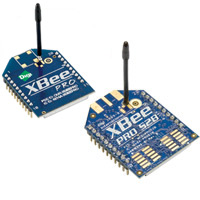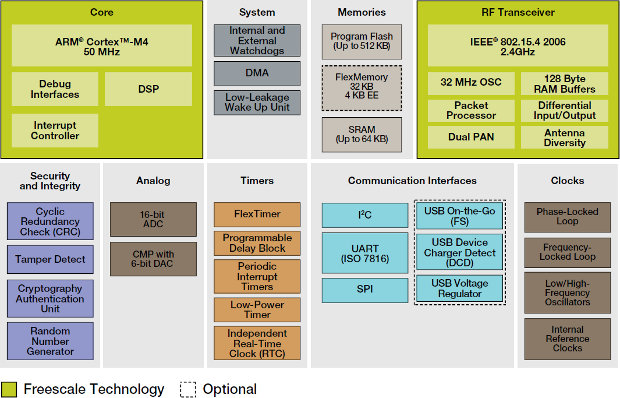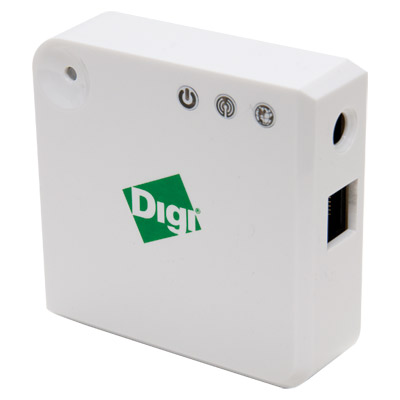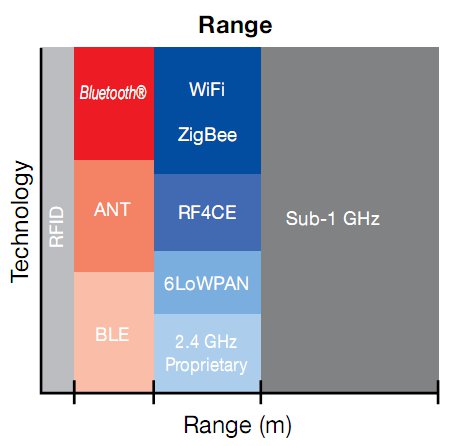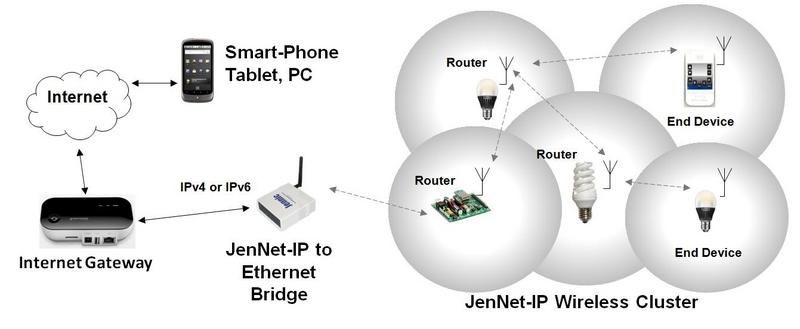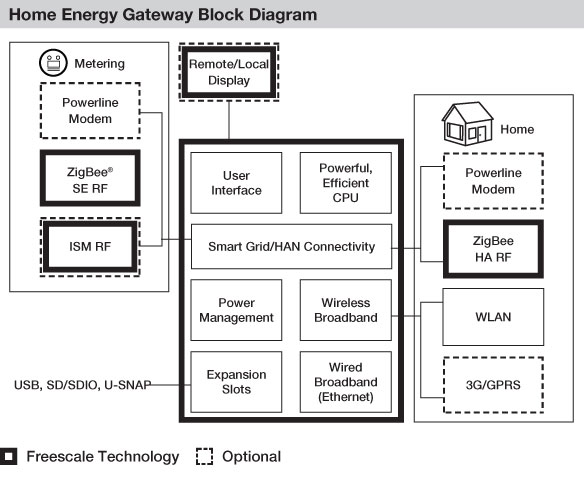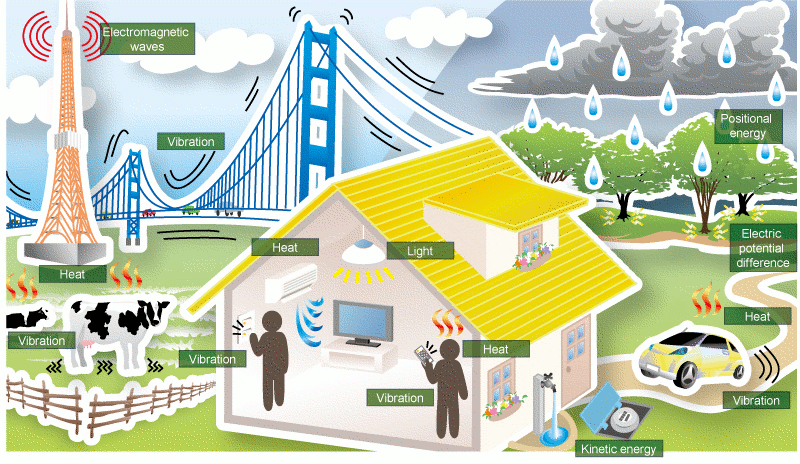Digi International has launches an example section on their website to showcase what can be done with their XBee 805.15.4, ZigBee and WiFi Modules, as well as their IoT gateway. They provide examples to use different type of sensors, control lights, motors, and more. They show demos on the website and explain how each components can be linked together, hooked to computers and connected to the internet. They currently just have a few tutorials only, but plan to add more overtime: Basic XBee 802.15.4 & Zigbee Chat 802.15.4 PWM and Digital Output with an LED 802.15.4 Digital Input with a Button 802.15.4 Analog Input with a Potentiometer Light Switch XBee – A wireless wall switch that can control lamps, fans, motors or your homemade robot The first four examples look good to get started, but the Light Switch XBee is the most interesting, and they describe 8 steps to show […]
Freescale Announces Kinetis KW20 Cortex M4 MCU with Built-in Zigbee Transceiver
Freescale announced the addition of the Kinetis KW20 to its Kinetis microcontroller portfolio. The Kinetis KW20 is based on ARMCortex-M4 core and MC13242 RF transceiver to deliver a single chip Zigbee solution for the Internet of Things and power applications such as smart energy, smart metering and building control. The company explains that their new wireless MCU family aims to “address the increased processing and memory requirements associated with future ZigBee Smart Energy 2.0 and Internet Protocol specifications”. The KW20 supports dual personal area network (PAN) to enable a single device to communicate wirelessly on two ZigBee networks. This feature eliminates the need for multiple radios required to connect different home automation and smart energy networks. Kinetis KW20 wireless MCU features: ARM Cortex-M4 processor core Up to 512 KB of flash memory and 64 KB of RAM Cryptology accelerator and sophisticated tamper detect Integrated IEEE 802.15.4-compliant radio (MC13242 RF transceiver) Low […]
ConnectPort X2e SEP 2.0 Compliant Home Energy Gateway with Zigbee Connectivity
Digi International announced the “ConnectPort X2e for Smart Energy”, a Linux-based Home Energy Gateway with Zigbee connectivity based on Freescale Home Energy Gateway Reference Platform powered by Freescale i.MX28 processor. The “ConnectPort X2e for Smart Energy” is upgradable to comply with the new Smart Energy 2.0 Profile (SEP 2.0) and enables ZigBee devices on a Home Area Network (HAN) to communicate with an energy service provider. The new gateway is a low-cost, enhanced version (hence the “e” in X2e) of Digi’s ZigBee Smart Energy Gateways. The device connects ZigBee Smart Energy devices from a Home Area Network (HAN) to an energy service provider via broadband. It supports over-the-air updates of connected Smart Energy devices, making it easier for utilities and application partners to establish and maintain large Smart Energy device deployments. The company offers two models namely: ConnectPort X2e, ZigBee SE Coordinator for stand-alone Smart Energy networks that do not […]
BiKN Technology Platform: 802.15.4 Wireless Sensor Network
NXP and Treehouse Labs has unveiled BiKN technology platform that uses low-power 802.15.4 wireless chip technology from NXP Semiconductors to enable the “Internet of Things” and opens new markets and applications for affordable wireless sensor and control networks. This technology allows to track “Smart Objects” tagged by wireless sensors and monitor (and possibly control) them via an application running on mobile devices, PC or Cloud servers. BiKN Technology Platform can be used in a range of applications including home and industrial automation, smart energy management, improving tracking and monitoring of equipment and inventory in retailing and hospitality, enhancing safety monitoring and security in healthcare, social services, athletics and educational environments. BiKN Technology Platform works by integrating hardware and software, operating through mobile and web-enabled devices, and leveraging IEEE802.15.4 low-power networking standards. Treehouse Labs uses the NXP JN5148 ultra low-power wireless microcontroller and the JenNet-IP open source wireless network protocol stack […]
List of Wireless Standards for Local and Personal Area Networks
While designing your embedded system, you may have to choose between different wireless standards to match your needs. I’ll provide a list a short and mid-range wireless standards, their description and links to open source software stacks (when available) to help you better understand the different options available. Wide Area Network wireless network such as LTE, Wimax, etc.. won’t be discussed in this blog entry. Mesh and IP Networks: Wifi (IEEE 802.11): Wifi is probably the most used wireless standard in consumer electronics devices today as it allows users to connect their device to their LAN wirelessly. An access point has a typical range of about 20 meters indoors and up to 100m outdoors. There are 4 standards 802.11a 802.11b, 802.11g and 802.11n. The latest has a theoretical throughput of 300 Mbps. Check out Wikipedia Wifi page for details. The Wi-Fi stack is part of the Linux kernel but you […]
NXP to release “Internet of Things” source code
Up to now, mainly people were using the Internet, but now things connect to the internet without human beings intervention for data collection (sensors) in order to improve the efficiency of different systems, this is what is called the “Internet of Things”. Watch IBM introduction to the Internet of things if you are not familiar with the concept. NXP recently announced the JenNet-IP software will be available under an open-source licence in Q4 2011. JenNet-IP is an ultra-low-power, IEEE 802.15.4-based wireless connectivity network layer software stack. Key features of the JenNet-IP networking software include: Highly robust, easily scalable, self-healing tree network proven at over 500 nodes Proven in a variety of residential and industrial applications, including asset management, lighting, solar and building control IP-based networking to enable the Internet of Things Gateway or non-gateway options for connection to the Internet or stand-alone operation Easy-to-use, elegant and extensible SNAP object-oriented API […]
Freescale Home Energy Gateway Reference Platform
I’ve previously introduced Atmel / Mentor Embedded smart grid solutions, specifically Atmel In-Home Display hardware with Mentor’s Inflexion User Interface. Today, I’ll present Freescale Home Energy Gateway Reference Platform based on i.MX283 ARM 9 MCU, MC13224V Zigbee IC, 9S08QE32 MCU & MC34726 Regulator and running Windows® Embedded Compact 7. The home energy gateway is the interface between the utility-controlled smart grid and energy-consuming in-house objects. The graphical user interface (GUI) has been design with Silverlight. Functions of the Home Energy Gateway Collect real-time energy consumption from smart meter and power consumption data from various in-house objects Control activation/deactivation of home appliances Generate dashboard to provide feedback about power usage Provide control menus to control appliances Provide a ubiquitous link to the broadband Internet Freescale home energy gateway solutions allow every point of the smart home to be connected and controlled from a central point, enabling power efficiency and energy optimization. […]
Battery-less embedded devices with Power Harvesting
Embedded systems without batteries nor connection to the mains, is that possible ? The answer is Yes!. For ultra low-power devices, Power Harvesting (aka Energy Harvesting) may be an option. By harvesting the energy from vibration from people walking or cars crossing bridges, automobile heat, broadcasting waves, light, wind, etc.. it is possible to capture enough energy to power very small devices such as wearable electronics and wireless sensor networks. The illustration below show the multitudes of tiny sources of energy around us. Please refer to the table below to see what amount of energy might be harvested depending on the source. Energy Source Examples Energy per unit area Vibration Walking, motors, bridges 10-3 to 10-4 W/cm2 Light Lighting, sunlight inside rooms 10-4 W/cm2 Heat Body heat, vehicle waste heat 10-5 W/cm2 Electromagnetic waves Broadcasting, wireless LAN emissions 10-6 W/cm2 The two main advantages of devices that can be powered […]


